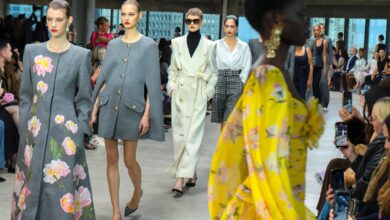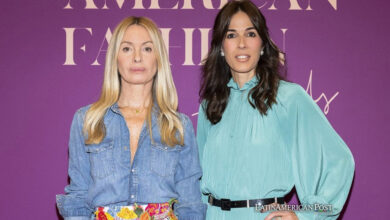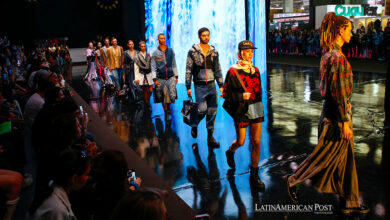Was Karl Lagerfeld really a hero?
Listen this article
A month after the death of the 'fashion Kaiser', we reflected on the figure of Karl Lagerfeld in this industry

Karl Lagerfeld, creative director of Chanel and genius of fashion, died a month ago. After his death, the networks were flooded with the lament of his muses and models. A week later, during the fashion week in Paris, we saw his last fashion show, in which his models cried and paid tribute to him. Even today, several weeks after his death, the regret for his death is still news and is appearing in the most prestigious fashion media. To what extent is this an idealization of the genius?
His contributions to the industry
Karl Lagerfeld undoubtedly had one of the most prolific careers that could be seen in recent years in the fashion industry not only as a designer but also as a photographer. He worked for different design houses as a designer and creative director. Earlier in his career, he worked for Pierre Balmain, Jean Patou, and Chloé. In the seventies, he launched his own brand, Karl Lagerfeld, in which he worked until his death. He is also famous for his collaborations with Fendi from 1967 to the present day, in which he helped to make other materials that he used earlier.
Undoubtedly, he is also known for his work with Chanel. He became the creative director of that brand in 1983, a decade after the death of its founder Coco Chanel. The company trembled for lack of a new leader and a firm that would give prestige to the brand without losing its essence. Lagerfeld managed to keep the style and elegance characteristic of the brand, and innovate and make disruptive designs that brought the attention of the public and the press back to the fashion firm.
With his arrival to the firm, in addition, the designs became exclusive to Chanel, meaning that they did not share rights with the distributors but belonged completely to the firm. By the nineties, Chanel had once again been at the top of the industry. Karl Lagerfeld, undoubtedly, was a genius of fashion since he was not only a great designer but also knew the business.
The Kaiser also led a parallel career as a photographer. He made from artistic photography, with which he won in 1996 the Culture Award of the German Association of Photography, even fashion photography. Thus, in addition to designing the collections for Chanel, he photographed the garments himself and used his photos for the signature campaigns. Karl Lagerfeld was in everything.
Also read: Karl Lagerfeld died: the fashion industry is in mourning
The other side of the coin
Although a genius of fashion, Karl Lagerfeld was also famous for the controversial statements he made. His entire figure revolved around an exclusive and elitist image of fashion. Thus, the designer and photographer put together an exclusive fashion empire and therefore, exclusionary. Even when he collaborated with popular clothing brands such as H&M and Falabella, Lagerfeld made sure that they were exclusive garments that were counted and not accessible to everyone.
This was part of his business, he knew how to make his designs desirable: giving them an illusion of scarcity and with this the illusion of exclusivity. Exclusivity that in any case did not stop him from collaborating with H&M, which, although popular and accessible, is the queen of fast fashion, which, one might say, stands on some precepts opposed to those of luxury brands such as Chanel.
The figure of Lagerfeld, then, is necessarily linked to exclusive fashion. One of his most important appointments, which he repeated in interviews and statements is that "trendy is the state just before tacky". The way in which the Kaiser conceived the fashion industry, reveals one of its greatest violence: it is an industry in which the class struggle is manifested and which promotes differentiation.
Says Georg Simmel, German philosopher, that "the fashion of the upper class differ from those of the lower class and are abandoned at the moment in which the latter begins to access them". The same was true of Pierre Bourdieu in his research of half a century (at the time when Lagerfeld began a career in the fashion industry) on the social basis of taste. And hence the "trendy before tacky": Lagerfeld embodied that conception of fashion that claims to be exclusive by excluding the popular, because as soon as a trend was accessible to the public, for Lagerfeld became "in bad taste".
This, in addition to the fact that although disruptive and risky, Lagerfeld was also very traditional. On several occasions, he said that nobody wanted to see fat models on the catwalk and it is enough to see their favorite muses and models to see that they adhered to an unrealistic ideal of beauty. This would have to do with the same conception of exclusivity of fashion that I spoke of earlier. For Lagerfeld, the success of a catwalk was in showing, precisely, an ideal of beauty, not an 'accessible' image of the average woman. It is partly since his arrival in the industry that the extreme thinness of the models on the catwalk is perceived as a symbol of elegance.
Although he was an undeniable genius, Karl Lagerfeld stopped his genius in precepts that now the sustainable and inclusive fashion industry wants to unlearn.
LatinAmerican Post | Juliana Rodríguez Pabón
Translated fro "¿Era Karl Lagerfeld el héroe que nos pintan?"




